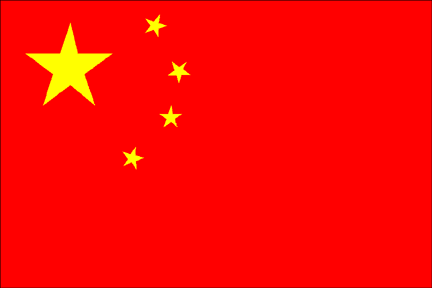





Before 1960 direct Soviet military assistance had included two TU-16 jet medium bombers, 13 TU-4 propeller driven medium bombers, plans for a Golf class conventionally powered guided missile submarine; SS-1, SS-2 and SS-3 surface-to-surface missiles and launch equipment, technology for developing the SS-4 and a small number of SA-2 surface-to-air missiles. Additionally, the Soviets probably provided assistance in constructing the missile test range at Shuangchengtzu.
In the 1970s the nuclear weapons program saw the development of MRBM, IRBM, and ICBM capabilities and marked the beginning of a minimum deterrent force. China continued MRBM deployment, began deploying the Dongfeng-3 IRBM, and successfully tested and commenced deployment of the Dongfeng-4 (CSS-4) limited-range ICBM.
China's deployment practices since MRBMs first became operational in the late 1960s have been carefully conceived, indicating an awareness of the need for the survivable second strike force. The survivability of the Chinese ballistic missile force has been sought by dispersal, careful use of terrain features, mobility and, more recently, hardened silos.In the 1970s average rates of construction of missile systems were 10-12 launchers per year, but operational missile systems (around 70-80 launchers) in 1975 were of extremely poor technical and combat capabilities with respect to survivability, reliability, accuracy and combat readiness. An extraordinarily high concentration of combat-ready launchers was created, with over half of the missile systems were concentrated at two bases), which sharply increased their vulnerability to enemy strikes. Beginning in the late 1970s, China deployed a full range of nuclear forces and acquired an incipient nuclear second-strike capability. The nuclear forces were operated by the 100,000-person Second Artillery Corps, which was controlled directly by the General Staff Department.
In 1986 China possessed a credible minimum deterrent force with land, sea, and air elements. Land-based forces included ICBMs, IRBMs, and MRBMs. The sea-based strategic force consisted of SSBNs. The Air Force's bombers were capable of delivering nuclear bombs but would be unlikely to penetrate the sophisticated air defenses of modern military powers such as the Soviet Union.
China reportedly has received technology related to missile programs from Russia in recent years. China probably will have the industrial capacity, though not necessarily the intent, to produce a large number, perhaps as many as a thousand, new missiles within the next decade. Most new missiles are likely to be short-range or medium-range, road-mobile, and fueled by solid-propellants. All of them are expected to have greatly improved accuracy over current systems, and many will be armed with conventional warheads. Work on the development of warheads with a conventional high-energy explosive warheads has benn a characteristic feature of the Chinese missile program since the beginning of the 1980's. Chinese military planning has focused primary attention to the preparation for and conduct of local wars in which the launch of nonnuclear versions of strategic missiles would not only have a direct effect on the important political and military targets, but also serve as a warning of the possible escalation of the conflict to the nuclear level.